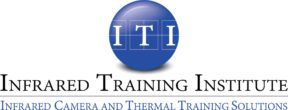History of Infrared Thermography
The credit for conceiving the concept of an infrared radiation goes to William Herschel, the astronomer, in the early 19th century. Herschel showcased the outcome of his experiment in 1800 in front of the Royal Society of London. Herschel took a prism to deflect light from the sun and identified the infrared that got past the red part of the spectrum with the support of an enhancement in the temperature displayed on a thermometer. He was astonished with the outcome and termed them “Calorific Rays”. The word ‘Infrared’ failed to prove its significance and it was only after late 19th century, people gradually came to know the term after understanding its manifold applications in diverse industry verticals.
Other epoch-making dates in the History of Infrared Thermography include:
- 1835:Macedonio Melloni makes the first thermopile IR detector;
- 1860 Gustav Kirchhoff formulates the blackbody theorem E = J(T,n);
- 1873: Willoughby Smith discovers the photoconductivity of selenium;
- 1879: Stefan-Boltzmann law formulated empirically omega_T^4
- 1880s & 1890s: Lord Rayleigh and Wilhelm Wien both solve part of the blackbody equation, but both solutions are approximations that “blow up” out of their useful ranges. This problem was called the “UV Catastrophe and Infrared Catastrophe”.
- 1901:Max Planck published the blackbody equation and theorem. He solved the problem by quantizing the allowable energy transitions.
- 1905: Albert Einstein develops the theory of the photoelectric effect, determining the photon. Also William Coblentz in spectroscopy and radiometry.
- 1917: Theodore Case develops thallous sulfide detector; British develop the first infra-red search and track (IRST) in World War I and detect aircraft at a range of one mile (1.6 km);
- 1935: Lead salts-early missile guidance in World War II;
- 1938: Teau Ta-predicted that the pyroelectric effect could be used to detect infrared radiation.
- 1952: H. Welker discovers InSb;
- 1950s: Paul Kruse (at Honeywell) and Texas Instruments form infrared images before 1955;
- 1950s and 1960s: Nomenclature and radiometric units defined by Fred Nicodemenus, G.J. Zissis and R. Clark, Jones defines D*;
- 1958: W.D. Lawson (Royal Radar Establishment in Malvern) discovers IR detection properties of HgCdTe;
- 1958: Falcon & Sidewinder missiles developed using infrared and the first textbook on infrared sensors appears by Paul Kruse, et al.
- 1961: J. Cooper demonstrated pyroelectric detection;
- 1962: Kruse and Rodat advance HgCdTe; Signal Element and Linear Arrays available;
- 1965: First IR Handbook; first commercial imagers (Barnes, Agema {now part of FLIR Systems Inc.}; Richard Hudson’s landmark text; F4 TRAM FLIR by Hughes; phenomenology pioneered by Fred Simmons and A.T. Stair; U.S. Army’s night vision lab formed (now Night Vision and Electronic Sensors Directorate (NVESD), and Rachets develops detection, recognition and identification modeling there;
- 1970: Willard Boyle & George E. Smith propose CCD at Bell Labs for picture phone;
- 1972: Common module program started by NVESD;
- 1978: Infrared imaging astronomy comes of age, observatories planned, IRTF on Mauna Kea opened; 32 by 32 and 64 by 64 arrays are produced in InSb, HgCdTe and other materials.
For more information please call us: 1-409-861-0788 or toll-free at 1-866-861-0788.

